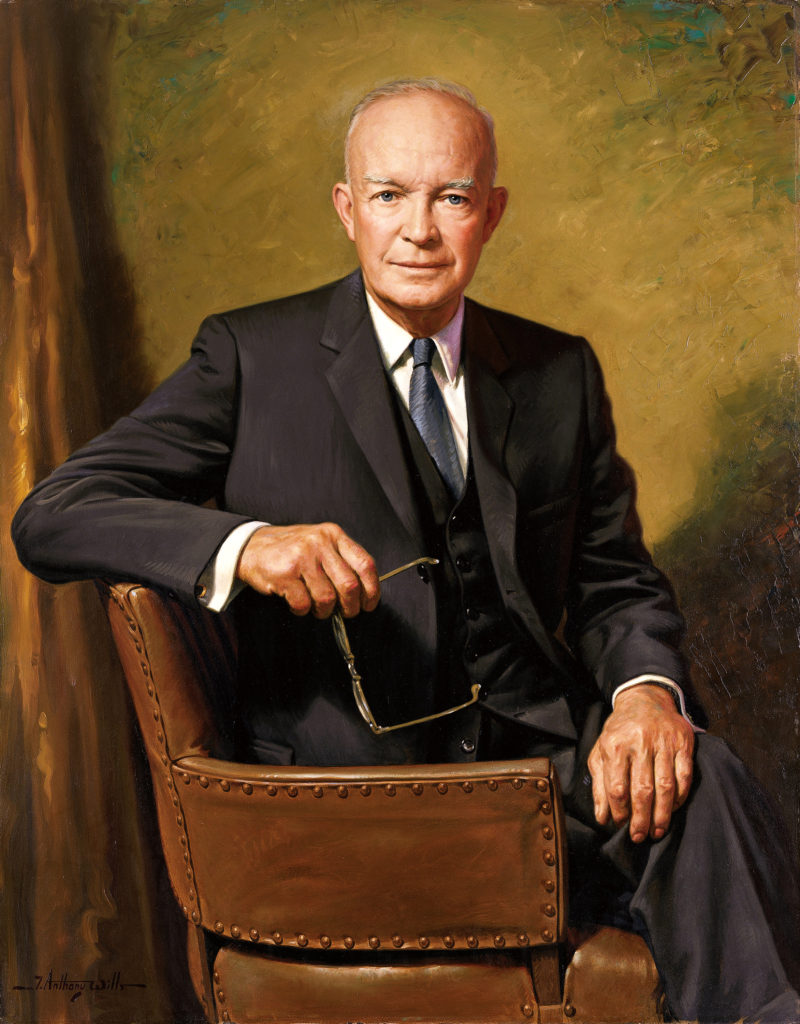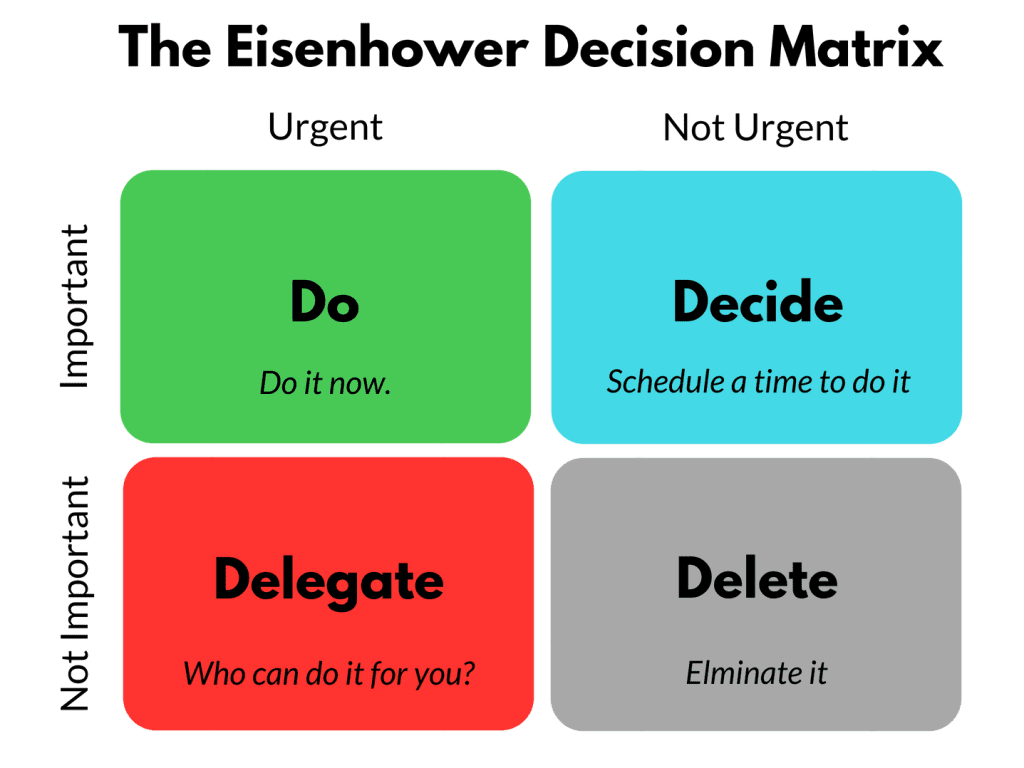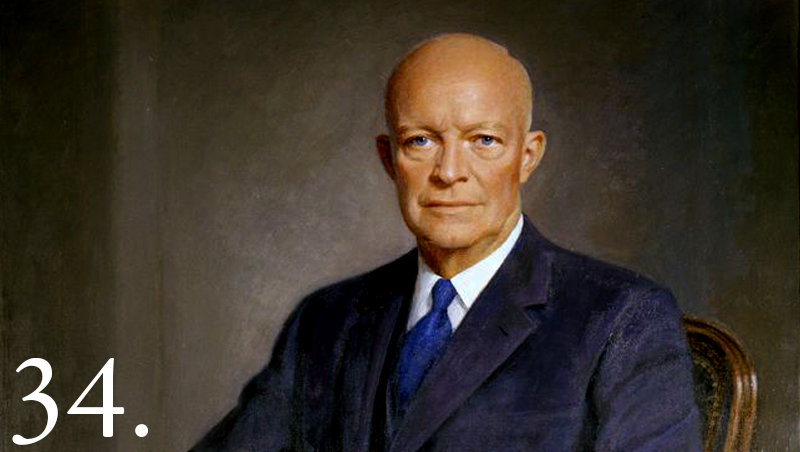I am writing a blog series about becoming a strong leader in the post-pandemic world. Last December, I discussed how leaders can address the fact that many organizations have fewer people and resources to do the job. I declared that leaders must set clear priorities for success in the post-pandemic world. In this blog, I will share a proven leadership tool, the Eisenhower Decision Matrix, to set clear priorities in the demanding modern world. Some of you may already be aware of this tool, which is a good thing.

Setting priorities for leaders is not new
Leaders have too many tasks and never enough time to finish everything. This phenomenon is nothing new. Since the dawn of time, leaders have faced the age-old questions of what to focus on and how to invest their resources. Time is the most important a leader possesses. You cannot create more time. Leaders have to juggle many tasks, activities, crises, etc. The most successful leaders deal with this dilemma by setting clear priorities for their teams and themselves. One such leader is Dwight D. Eisenhower. He was known for getting stuff done.

Who was Dwight D. Eisenhower?
General Dwight D. Eisenhower was a great US Army General. According to Wikipedia, Eisenhower was an American Army general and statesman who served as the 34th President of the United States from 1953 to 1961. During World War II, he was a five-star general in the United States Army and served as Supreme Commander of the Allied Expeditionary Forces in Europe. He was responsible for planning and supervising the invasion of North Africa in Operation Torch in 1942–43 and the successful invasion of France and Germany in 1944–45 from the Western Front. You would be hard-pressed to find anyone with more leadership experience.

What is the Eisenhower Decision Matrix?
How was President Eisenhower able to accomplish so much as a leader? He used several tools to increase his effectiveness. Let’s start by describing this tool, the Eisenhower matrix, in case you do not know about it. I asked my research assistant, ChatGPT, for a description. It is found below with some minor editing by me and another AI tool for editing. It is a solid summary.
The Eisenhower Decision Matrix, or the Eisenhower Box, is a simple tool for prioritizing tasks based on urgency and importance. It’s named after Dwight D. Eisenhower, the 34th President of the United States, who was known for his incredible ability to sustain high productivity. The matrix divides tasks into four quadrants based on two criteria: urgency and importance:
- Urgent and Important (Do First): These tasks need immediate attention and carry significant consequences if not completed soon. They are typically crisis-management situations or deadlines.
- Important, Not Urgent (Schedule): These tasks are important for long-term goals and success but do not require immediate action. Planning, relationship building, and self-improvement often fall into this category. Prioritizing these tasks can lead to lasting benefits.
- Urgent, Not Important (Delegate): These tasks require immediate attention but do not necessarily contribute significantly to long-term objectives. These can often be delegated to others or handled quickly to save time for more important tasks.
- Not Urgent and Not Important (Eliminate): These are the least critical tasks that offer little to no value and should be minimized or eliminated. They often include distractions or busy work.
This matrix aims to help individuals and teams focus on activities that contribute to long-term success, manage time more efficiently, and increase productivity. It encourages users to spend more time in the “Important, Not Urgent” quadrant, thus planning and preventing crises rather than reacting to them.
How do you use this proven leadership tool?
The best way to maximize this tool is to triage your tasks using the Eisenhower Matrix. List all the tasks you and your team need to accomplish and put them into the matrix. Each task will go into one of the four categories listed below. You may want to include your team members and leaders in this exercise so that they have a say in setting the priorities. Here is a link to go deeper with this tool: https://www.eisenhower.me/eisenhower-matrix/.
- Important + Urgent = Do first.
- Important + Not Urgent = Decide by scheduling it.
- Not Important + Urgent = Delegate to others.
- Not Important or Urgent = Delete the task from your list.

What is the hardest part of the Eisenhower Decision Matrix?
If this tool is so effective, you may wonder why more leaders don’t leverage it. Triaging activities into the matrix is not difficult for most leaders. The hard part is executing your decisions based on the matrix results. For example, many leaders struggle with delegating tasks to others. If you do, then the matrix will be challenging. Similarly, some leaders are reluctant to delete or eliminate any tasks that come their way. I challenge you to avoid this trap. Don’t waste your or your teams’ resources on tasks that do not need to be done. It is not worth it.

In the next blog, I will discuss another tool to set priorities
What about you? Do you know how to set clear priorities for your teams? Leverage the Eisenhower Decision Matrix to perform this critical function. In the next blog, I will talk about another tool that will help you set clear personal priorities and help put you on the path to success this year. I will challenge you to be even more ruthless when setting priorities so that you can lead successfully in the post-pandemic world.
I have two kinds of problems: the urgent and the important. The urgent are not important, and the important are never urgent.
In a 1954 speech former U.S. President Dwight D. Eisenhower, who was quoting Dr J. Roscoe Miller, president of Northwestern University
ATW! will make you a better leader
I hope you join me on this journey to raise the next generation of leaders. The world is in desperate need of more great leaders. Women and men who lead with confidence, clarity, and creativity. It’s time to become the leader that your world needs. Let’s go All The Way!
